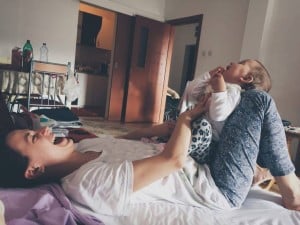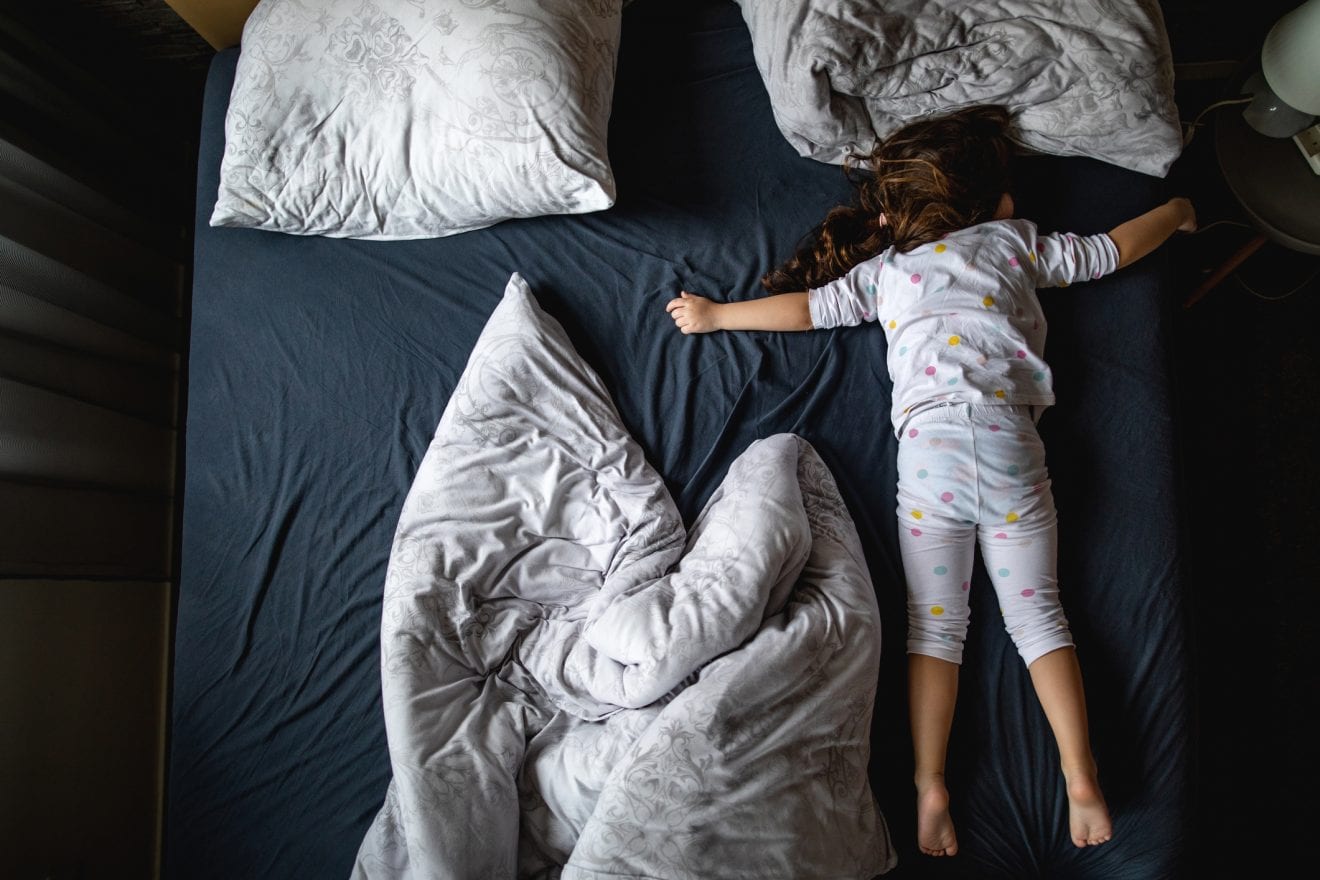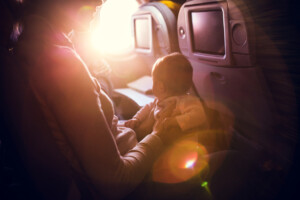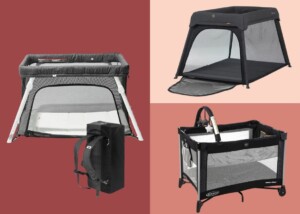Many parents worry that traveling with their kids will ruin the sleep habits they’ve worked so hard to establish. This is a valid concern. Maintaining your child’s sleep schedule while traveling can be tricky. There’s always something exciting going on, friends and relatives who are anxious to see the baby and others who have no idea how hard you’ve worked to get your baby sleeping through the night. But even though you’re away from home, babies and young children still need to sleep well.
If you’re committed to maintaining some healthy sleep habits while traveling, it’s totally possible! With some strategic planning and firm boundaries, you can keep sleep on track no matter the destination.
How to keep up good sleep habits while traveling with your family.
1. Start with a well-rested child.
Even before travel, we frequently run around, tying up loose ends and getting ready for our trip. If you’re carting your child around from place to place, this can throw off the great sleep routine you’ve worked so hard to create. Do your best to focus on naps and early bedtimes in the week leading up to the trip to avoid starting your travels with a sleep deficit. Starting with a well-rested child will set you up for success from the very beginning.
2. Plan accommodations strategically.
When planning where to stay while on vacation – be that a hotel, with family, or an Airbnb – your best choice will always be whichever allows you to have the most control over your environment. Keeping your child’s sleep space as close to their home space as possible is one of the most important considerations when planning for sleep success.
If your little one is used to sleeping in their room, room-sharing on vacation can be overwhelming and lead to tough nights. If you’re staying in a hotel, try to book a room with an attached area or a separate room. I know this is not always possible, so a large walk-in closet or even a bathroom can work well, too (as long as there is good air circulation!). If you’re staying with friends or family, talk with them in advance about having separate spaces for sleeping. Home offices work well as make-shift nurseries!
Maintaining your little one’s own sleeping space is the best-case scenario to ensure everyone gets a good night’s sleep. If separate spaces aren’t an option, try to put at least some distance or some barrier between your bed and your child’s sleep space. You can even try to create a partition in the room so that your child can’t see you from their crib or bed. (Large binder clips and a spare sheet can work wonders!)
3. Bring along familiar items.
Whether or not you realize it, your child’s sleep environment is a huge cue for sleeping well. Making your surroundings as similar as possible to your home nursery or child’s bedroom will help immensely. Bring your sound machine, your baby’s favorite lovey, and even your crib sheets. Anything that smells familiar and reminds them of their home sleeping environment will help them sleep in their new surroundings.
Along the same lines, darkness helps keep sleep on track, especially when traveling across time zones.1 If you are unsure whether your accommodations will be sufficiently dark enough, plan to travel with portable blackout shades. I am also a huge fan of the SlumberPod – a tent-like situation that can go over a Pack ‘n Play to create a dark (and private) sleep space for your child. In a pinch, tinfoil or construction paper taped to the windows can also work well.
4. Maintain a consistent routine.
A familiar bed and nap time routine cues your child that it’s time for sleep. While you’re traveling and the schedule’s a little wonky, and the surroundings are different, a recognizable bedtime routine can go a long way in helping your child settle down and fall asleep easily. Bring the books you usually read and sing the songs you usually sing. Maintaining the same sleep habits while traveling in the same order as at home will help your child feel at ease, even in a new place.
5. Don’t forget to enjoy yourself.
If you have a usually great sleeper on your hands or are good about sticking to a routine at home, allow yourself to relax and enjoy your vacation. Prioritize sleep when you can, but don’t lose your sanity. Your little one will adapt, and you can hop back on track when you get home!



































